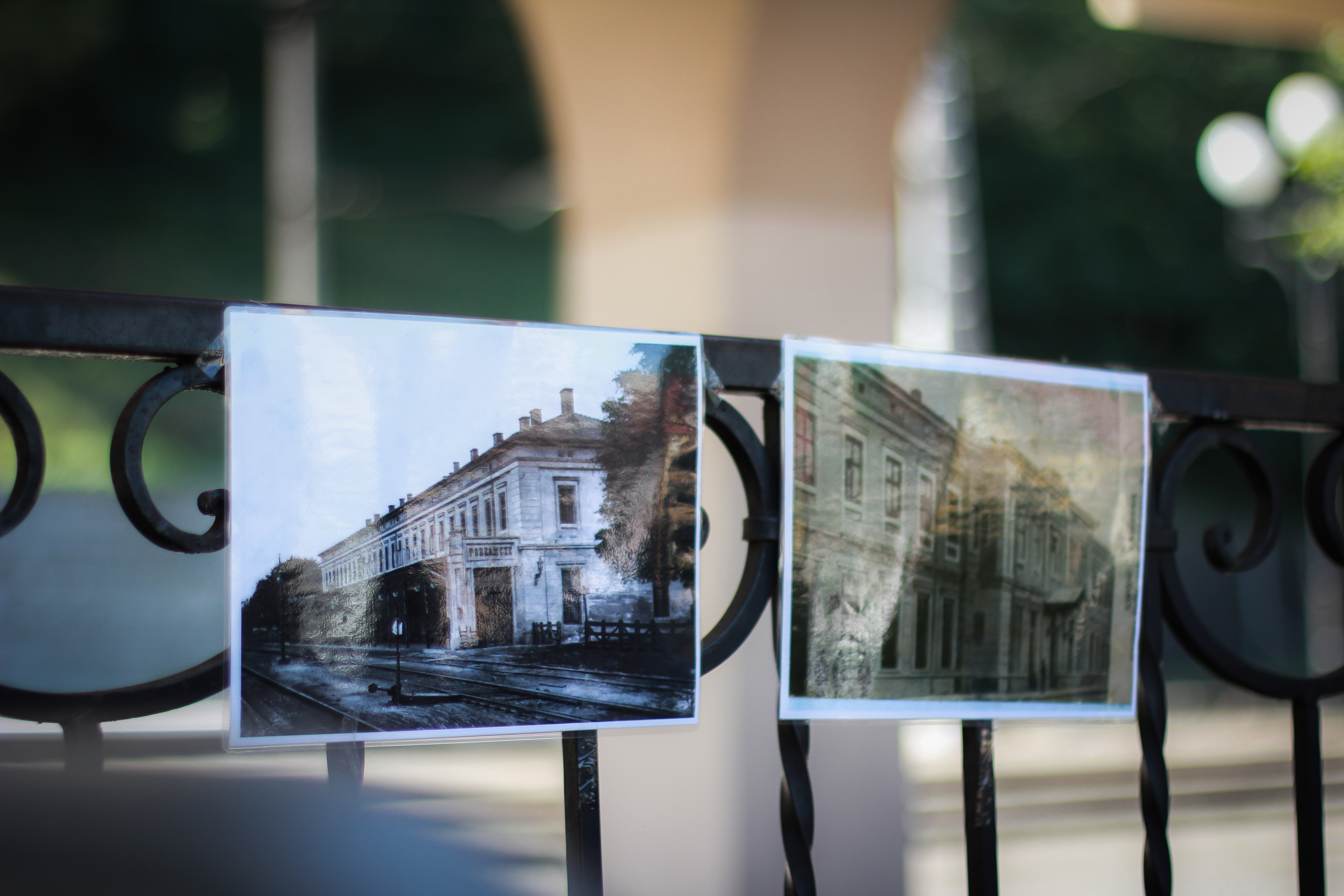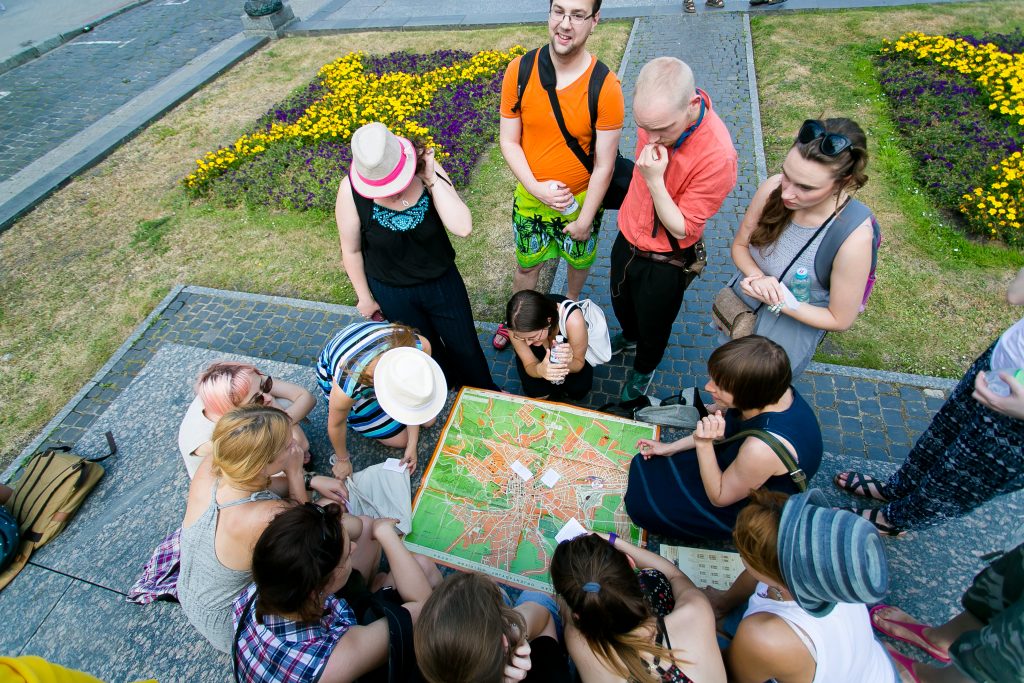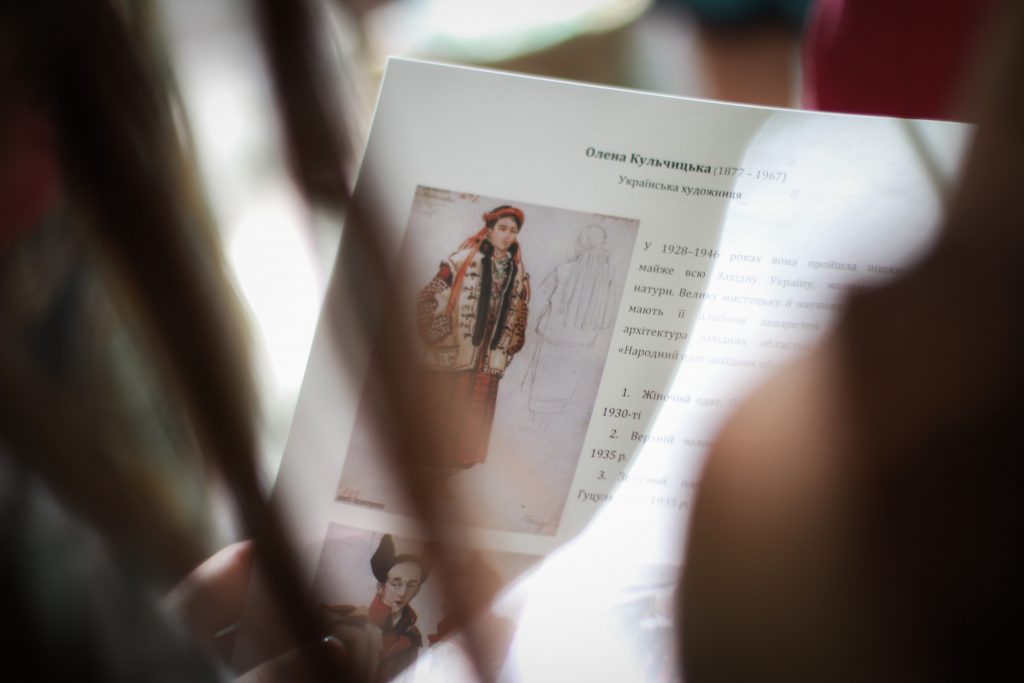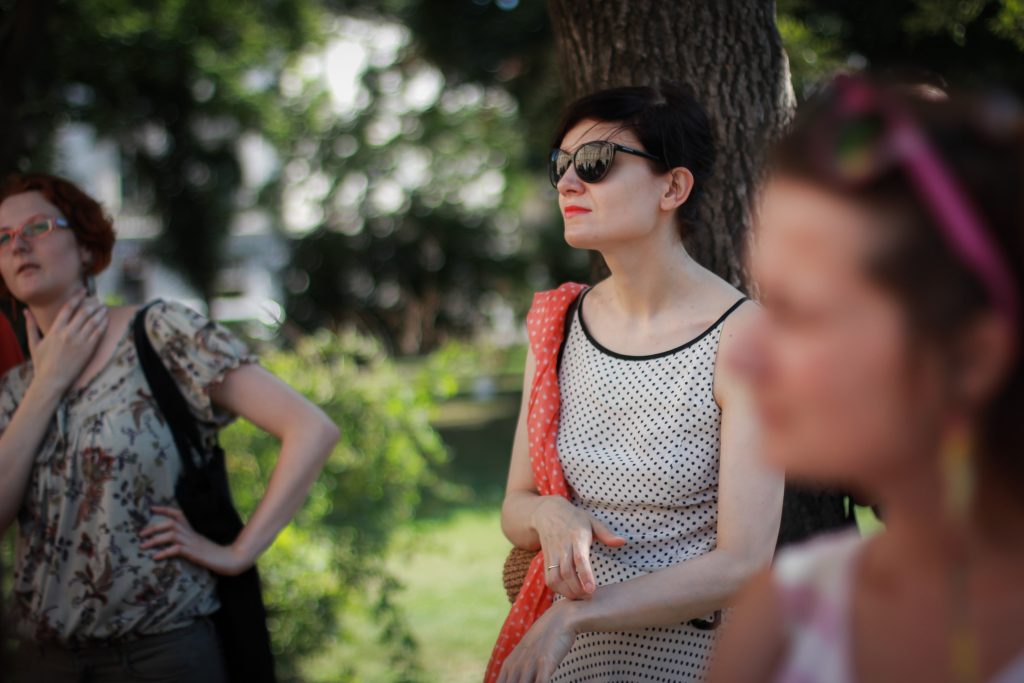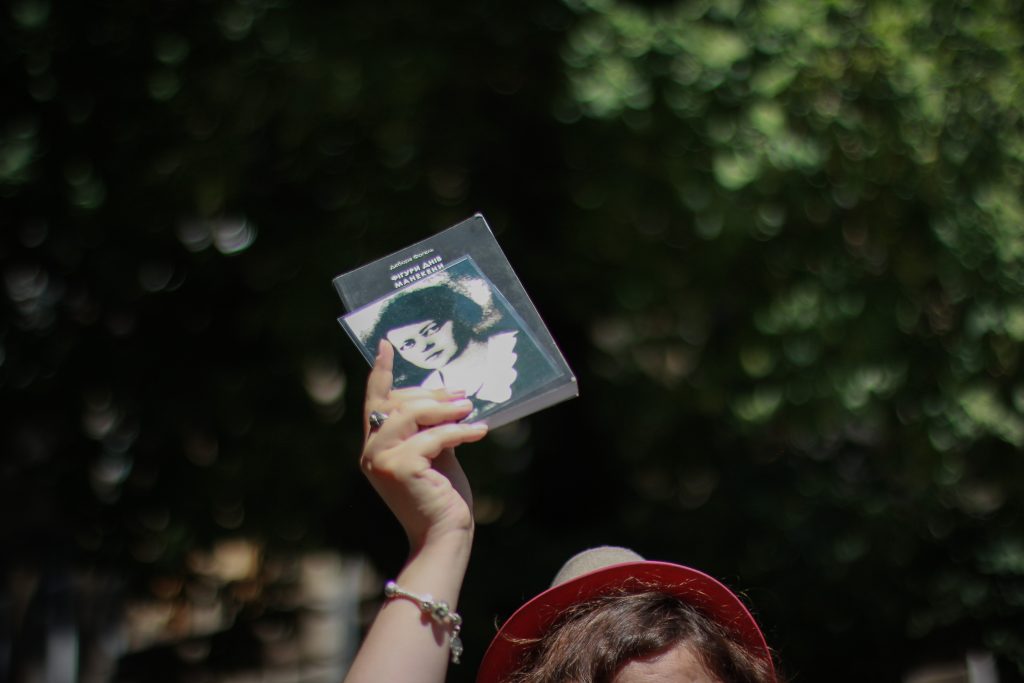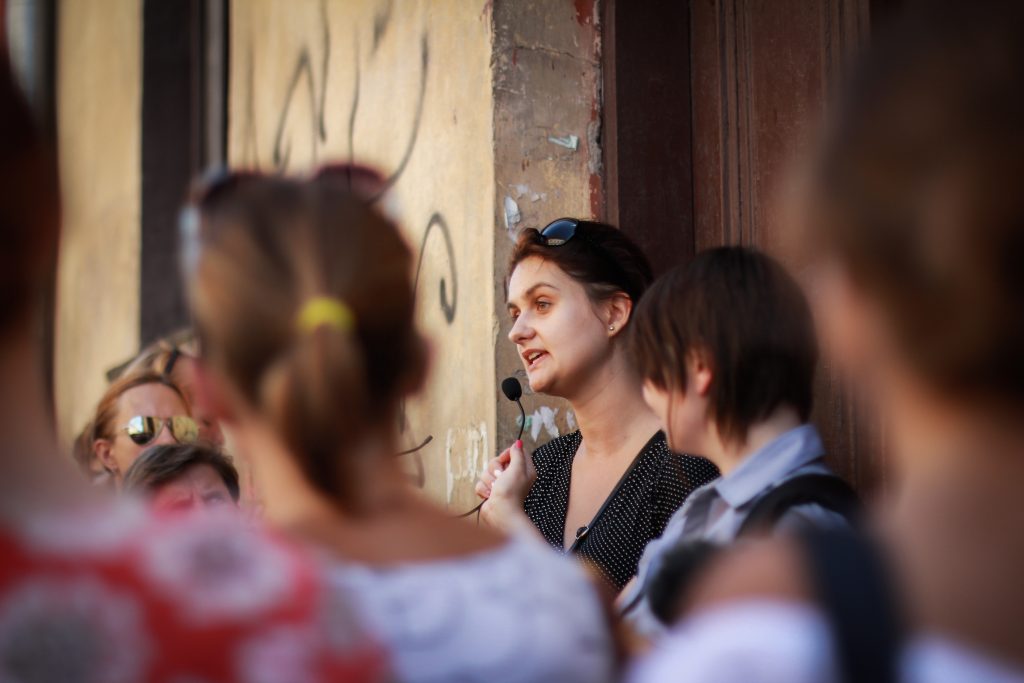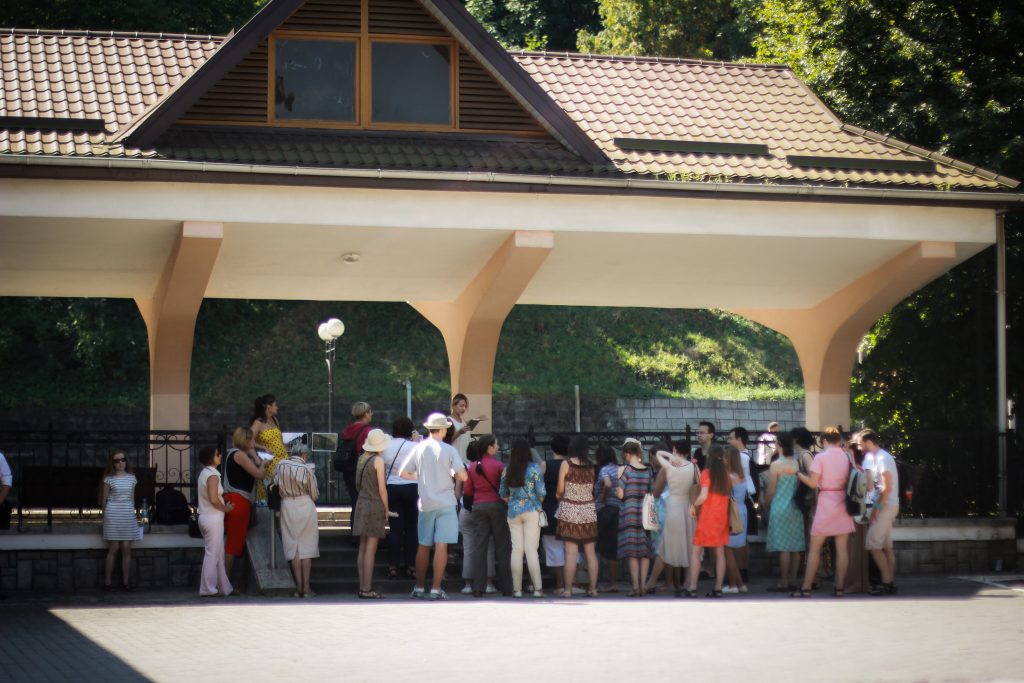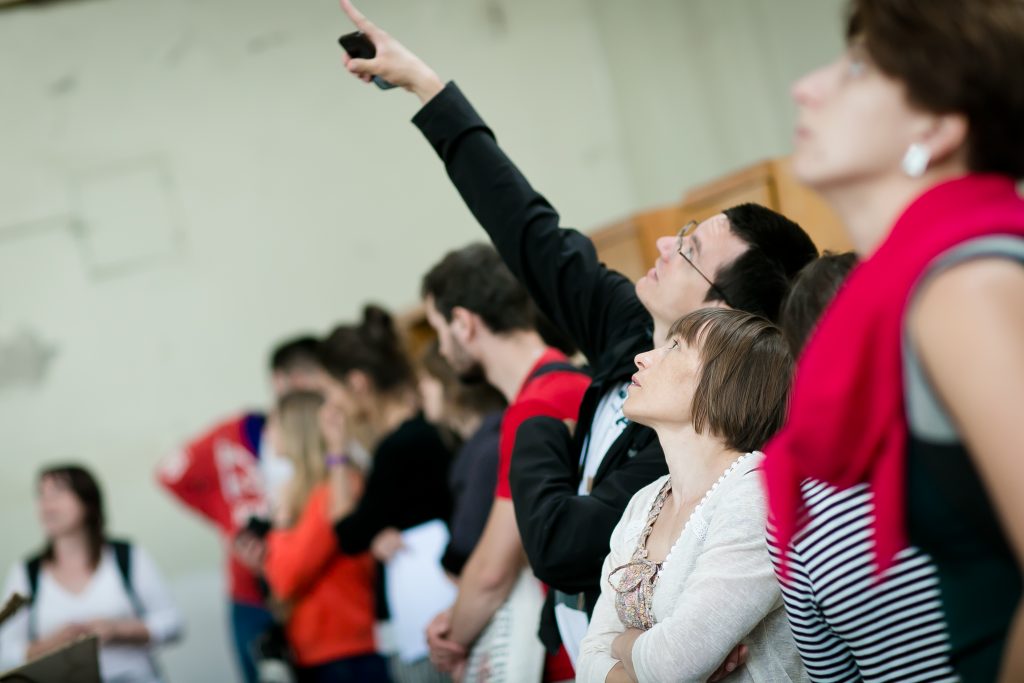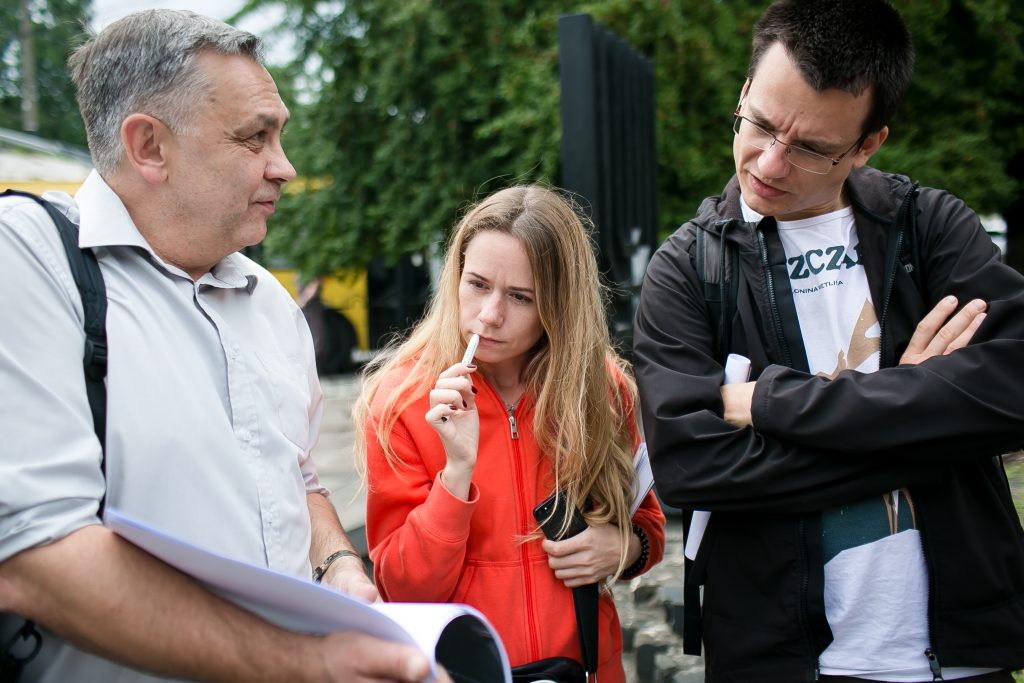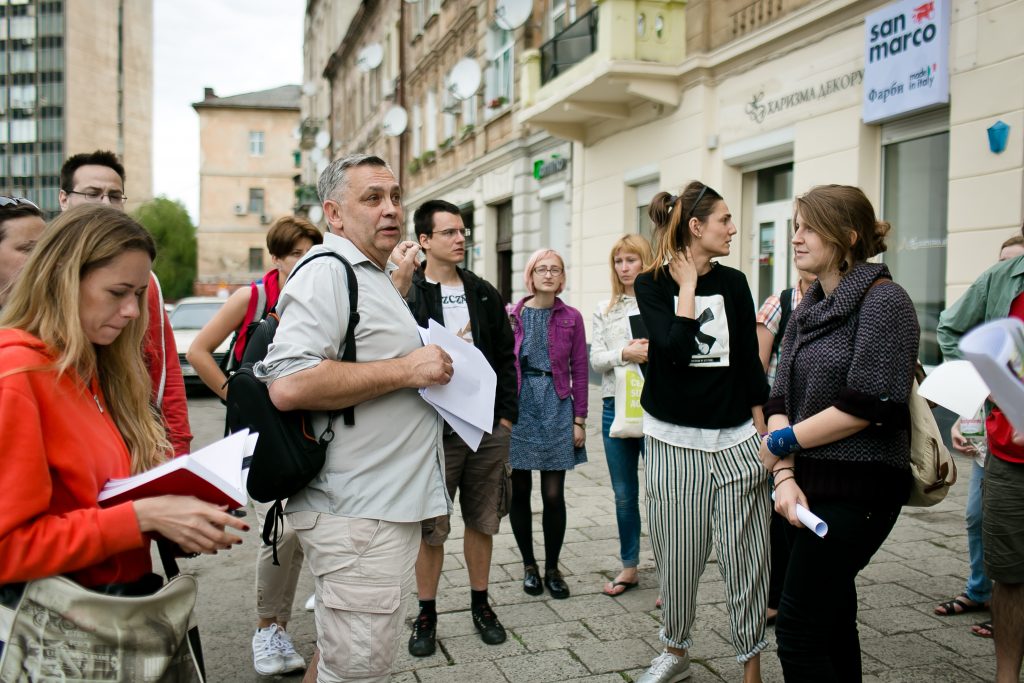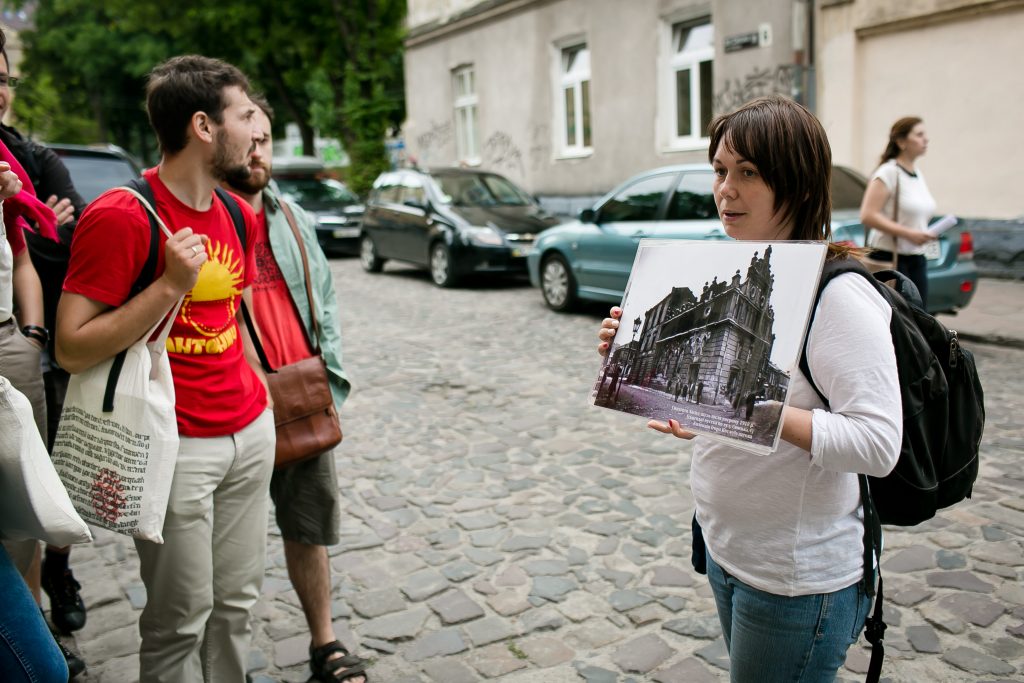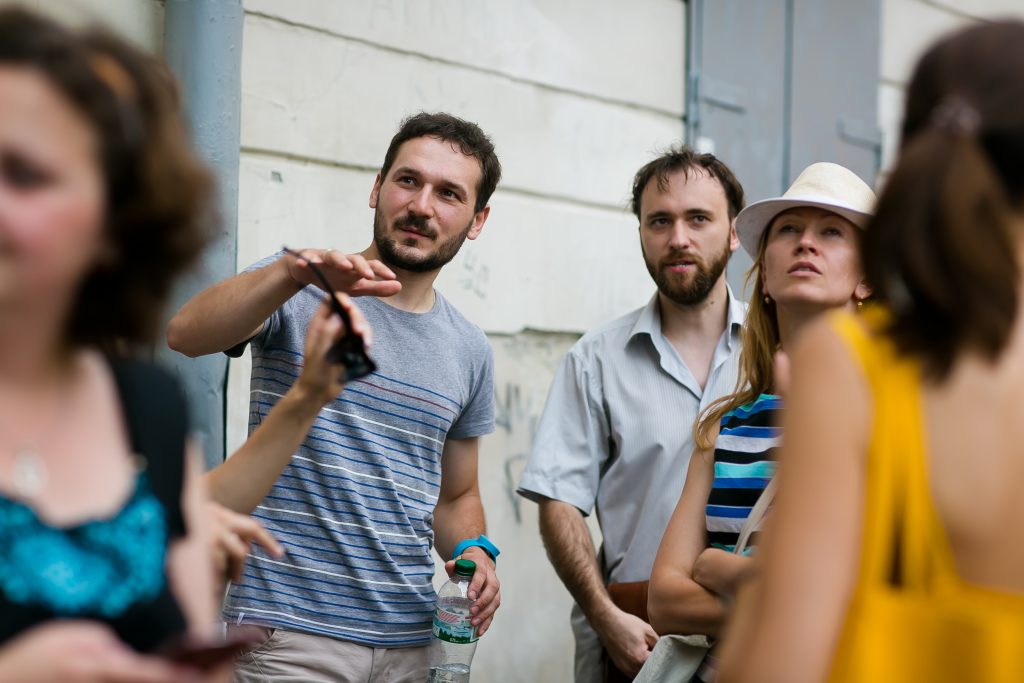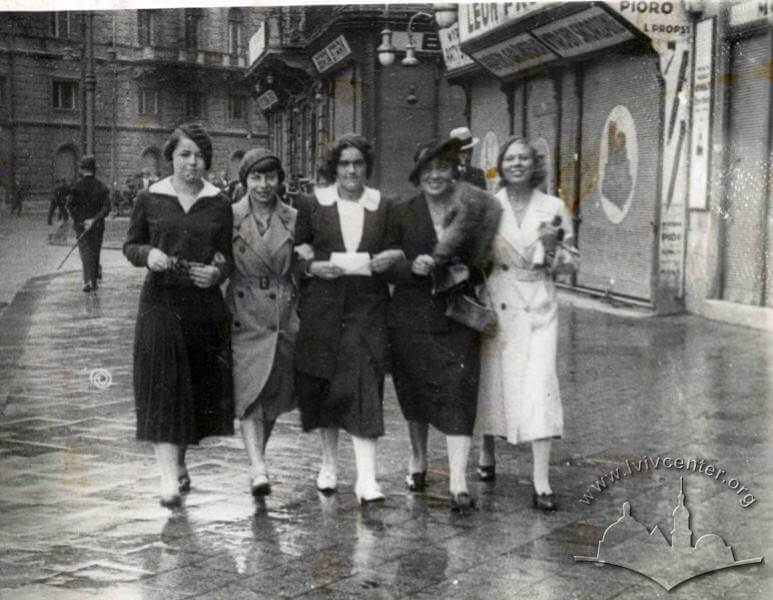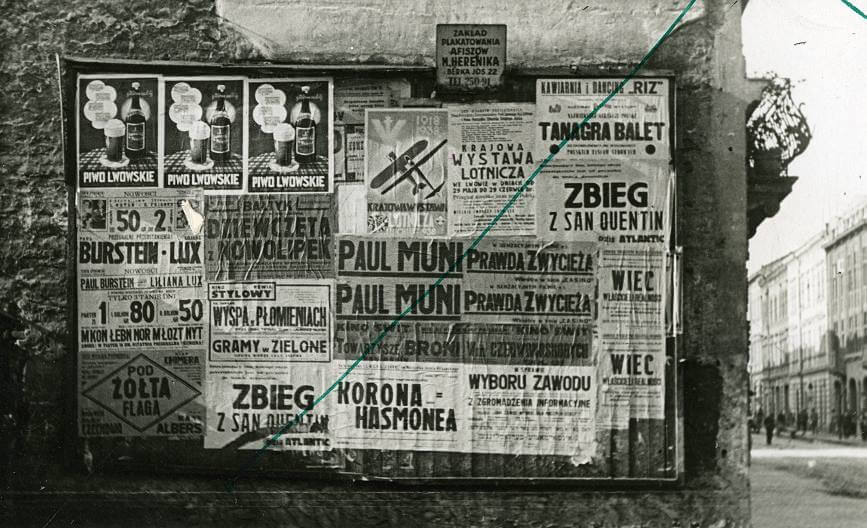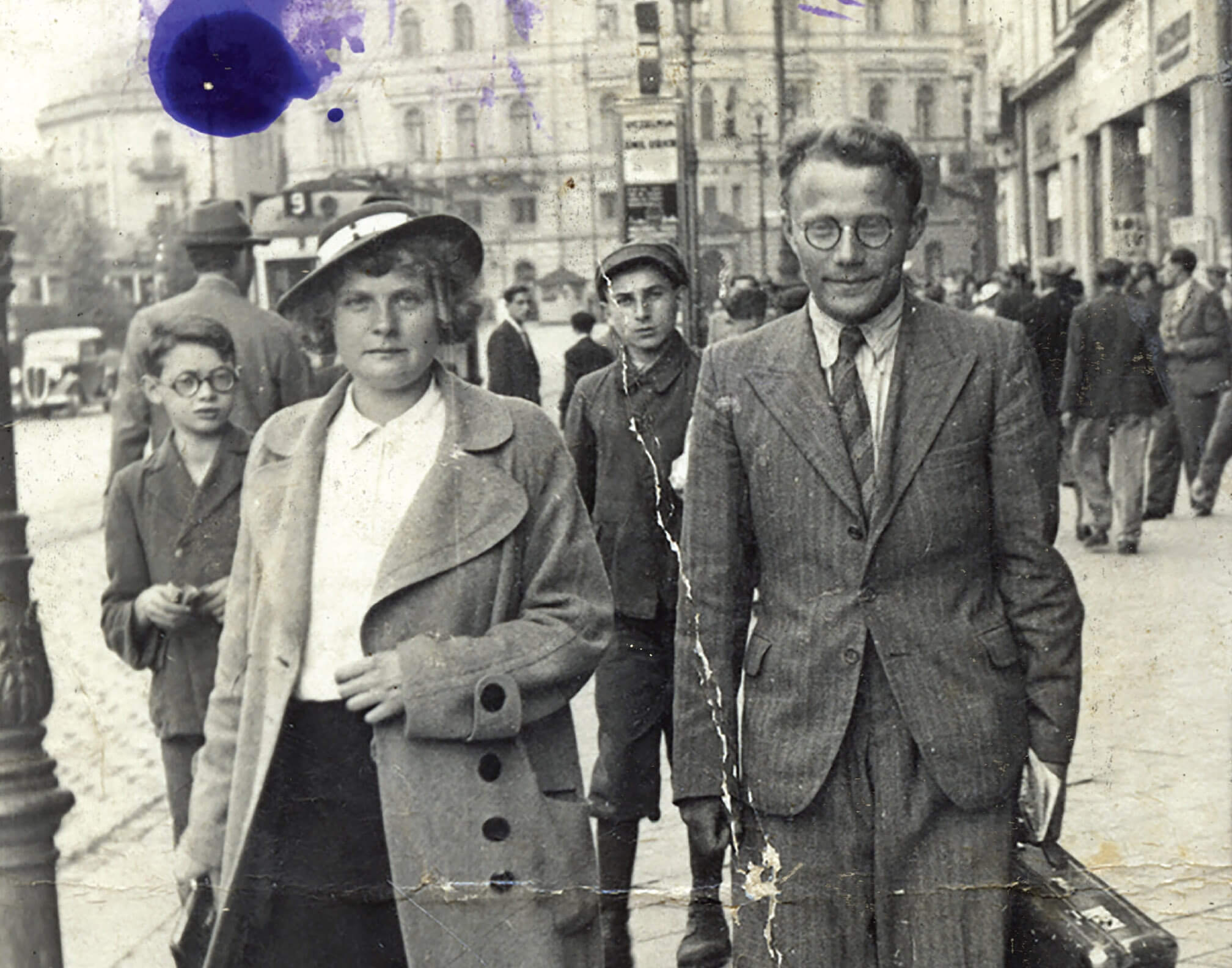Literary and Artistic Paths of Multicultural Lviv
July 11 – August, 5, 2016
Center for Urban History, Lviv
Workshop is a practical part of the curriculum of the summer school "Jewish History, Common Past and Heritage: Culture, Cities, Milieus."
The month-long school had participants study and practice a public history format of city walks. The format choice was preconditioned by the activation of a history-oriented tourism, as well as by mainstreaming of different formats of public history as creative tools for learning and promoting history knowledge, as well as engaging with the past. City walks use the built environment and sense of place as settings for the social and cultural history of the city and its diverse peoples over time and space. Unlike the guided tours, city walks go beyond the quotes of dates, the timeline of events, or the great names. They offer a more complex site related narrative and often pose questions on the concealed and invisible past while discovering and incorporating it into the context of a contemporary urban space. The city walk format helps build a dialogue both between the past and the present, and also between the guide/researcher, the audience, and the local communities.
The workshop program included a theoretical course by prof. Timothy White "Learning on The Go: City Walks and Public History". The participants gained knowledge and skills of working with narratives, of relating history to the place, of establishing links of present day spaces with the past, of engaging different audiences into storytelling, etc. Another part of the workshop provided for the school participants to develop their own city walks in Lviv.
The topics of the workshop focused on the literary and artistic life of Lviv between the two world wars. Lemberg / Lwów / לעמבערג / Львів of the time used to be a center of Polish culture and science, a hub for Ukrainian literature and national ideas. In addition, it was a significant nucleus for the modern culture of East Europe Jews. It was the place of conflict and cooperation, of hostility and friendliness, of ignorance and interest between the three communities in the city. It was an incredibly captivating and saturated artistic world that vanished in the WW2 hardly leaving any physical trace within the contemporary space of Lviv. The questions of why it is important to be aware of it and how to tell about that time were the main issues for the designers and participants of the workshop.
The objective of the workshop was to enable participants to gain practical experience within the format of city walks, as well as to deal with different topics and different audiences within the urban space. The tasks were to engage participants into searching for a new way to tell a story on a subject in the public space of the city, to explore the topic through the city and the city through the topic; to teach "read" the streets and the structure of the city, to discover the history of the place, to identify contested senses of places, to develop a narrative of the walk by combining the past and the present, the narrative and space, and to engage citizens and different audiences.
The workshop resulted in three city walks open to the public. The participants offered to the locals and tourists to take a walk along the present-day streets of Lviv and find the concealed traces of the past through literary milieus, through the stories of artists and writers, through their art and text pieces, through their imagination and memories. They engaged the audience in a discussion about what their heritage is for the present-day Lviv and why it is so selectively represented within the present space of the city. The city walk asked visitors to stop and reflect on the generations that have lived and traversed the spaces before, asking how changes took place, and who had the power to make the city we now see -- who does the present erase or forget, and why?
The city walks were the final part of the public program of the summer school "Jewish Days in the City Hall: Communities, Milieus and States in the 20th century Contested Cities."
Workshop developers:
Concept development and logistics – Dr. Iryna Matsevko (Center for Urban History), Dr. Joanna Lisek (Wroclaw University).
Contents, materials and lectures – Dr. Karolina Szymaniak (Wroclaw University), Andrij Bojarov (freelance artist, curator), Dr. Danylo Ilnytskyi and Dr Viktor Martyniuk (Ivan Krypyakevych Institute of Ukrainian Studies at the NAS of Ukraine), Prof. Katarzyna Kotynska (Institute of Slavic Studies at the Polish Academy of Sciences).
Group coordinators – Anna Chebotarova, Oleksiy Chebotarov (Center for Urban History), Olena Andronatiy (educator, instructor in informal methods, Hillel).
Credits
Сover Image: Liza Kuznetsova
Image Gallery by Iryna Sereda, Liza Kuznetsova
